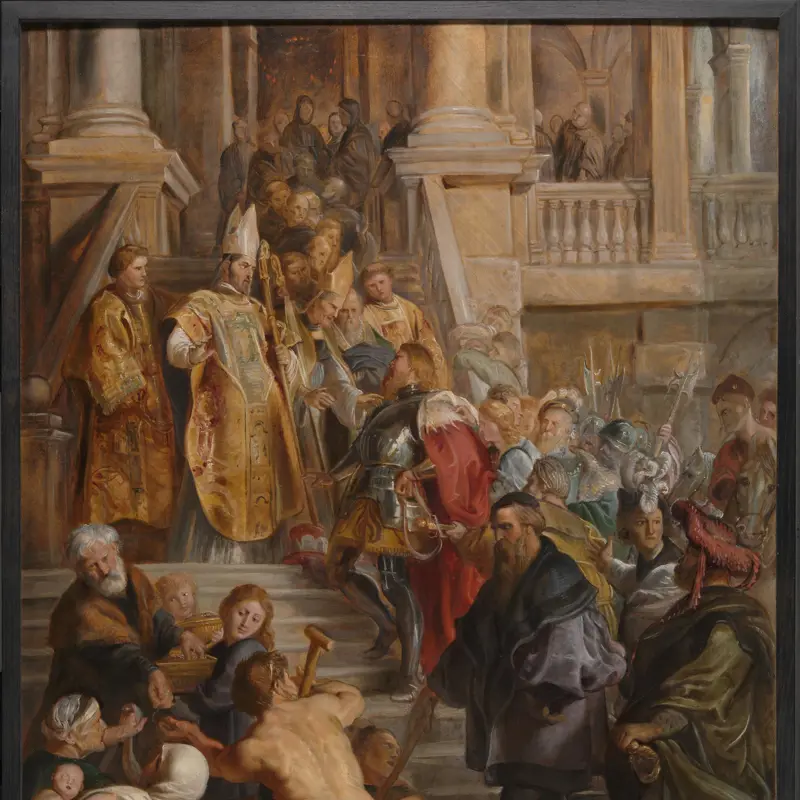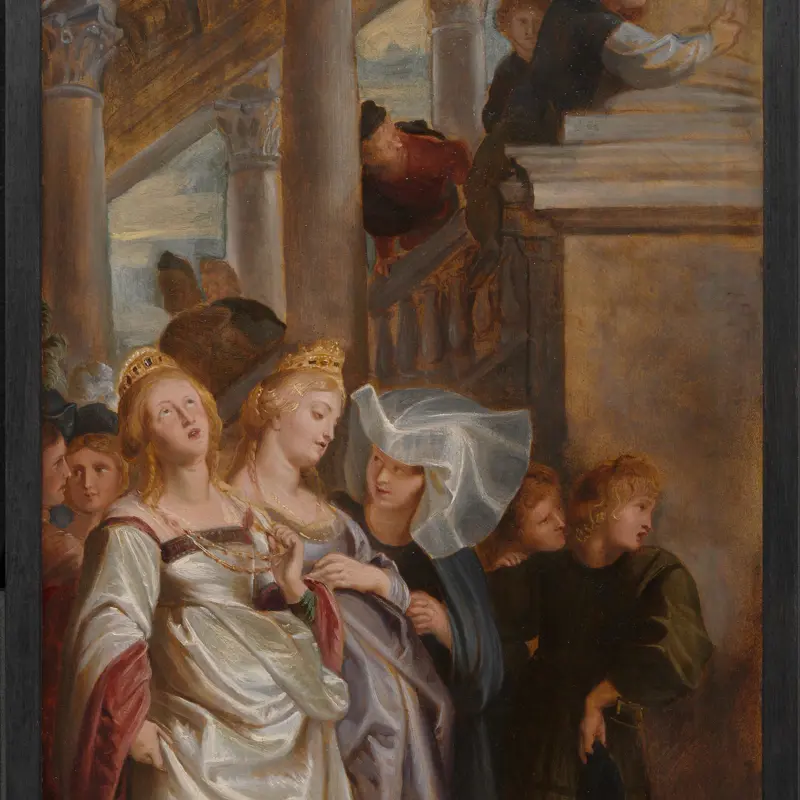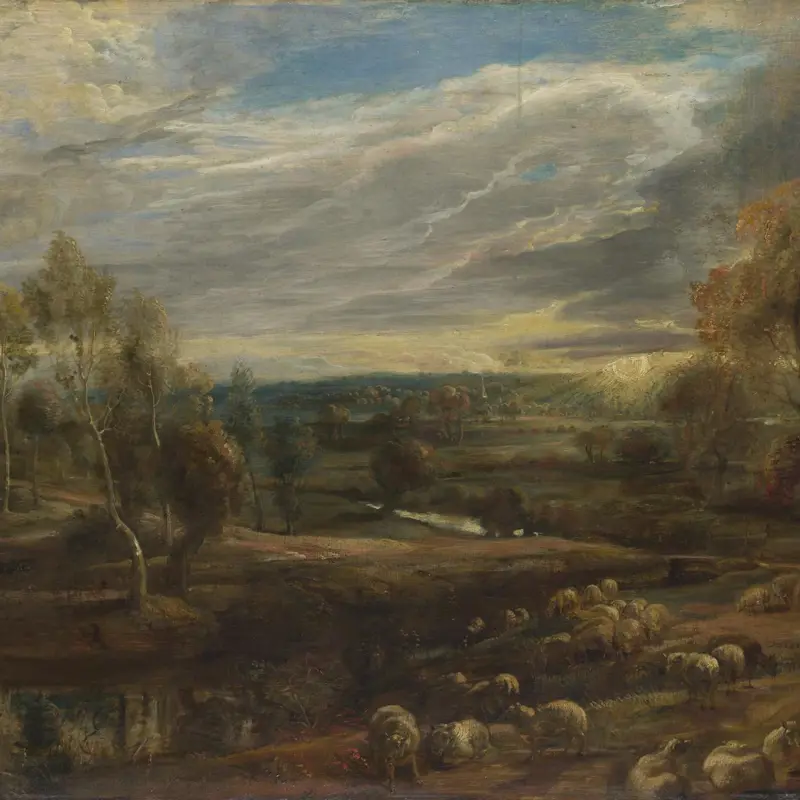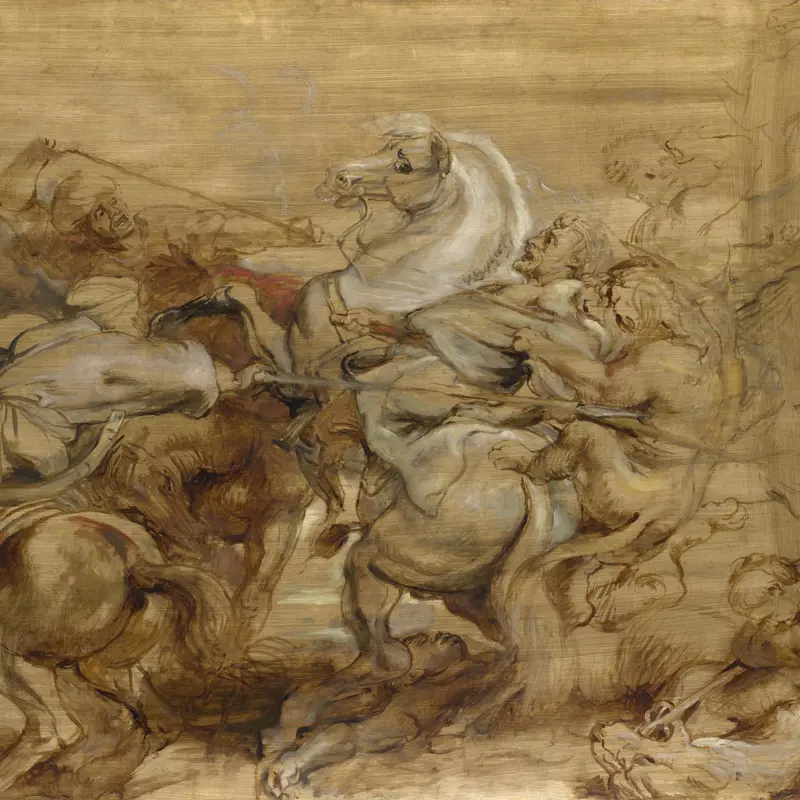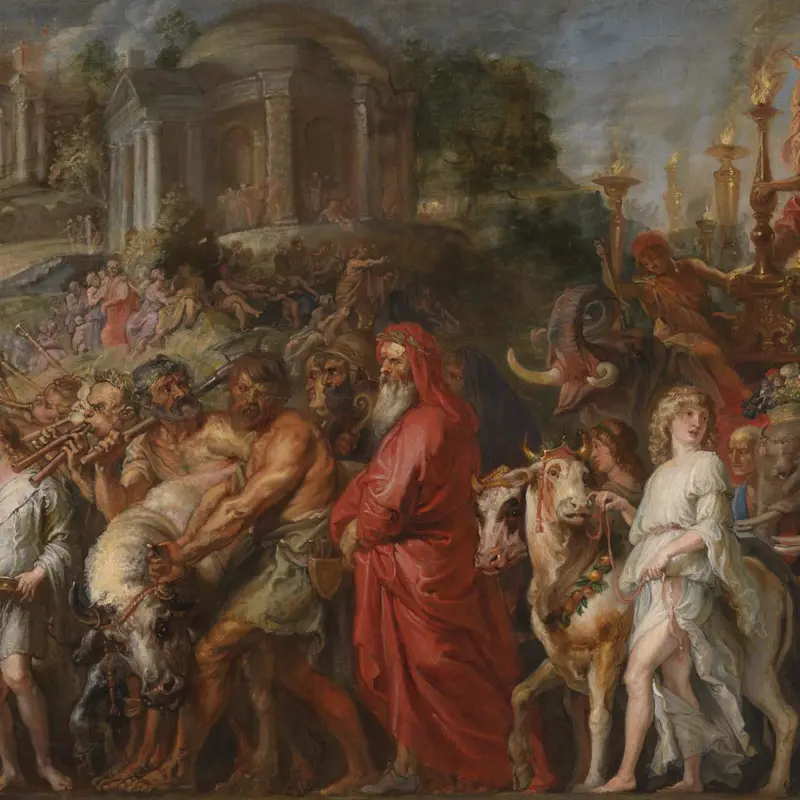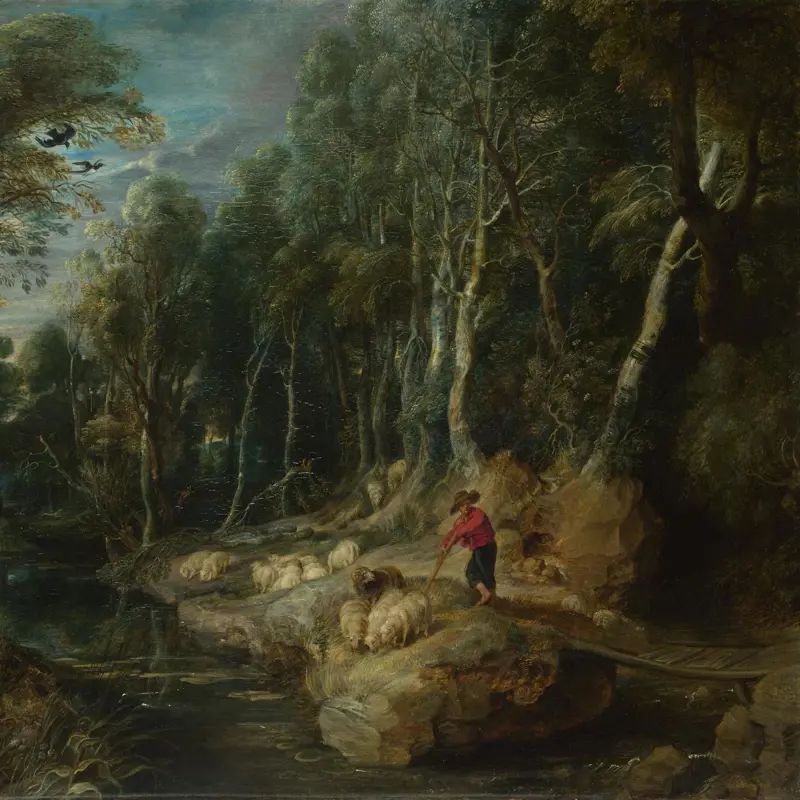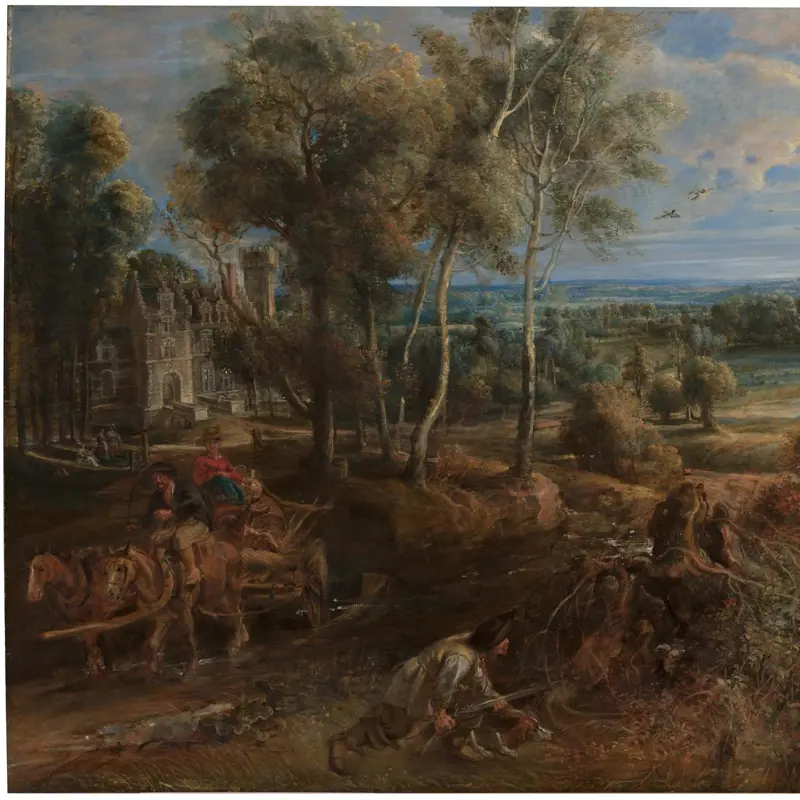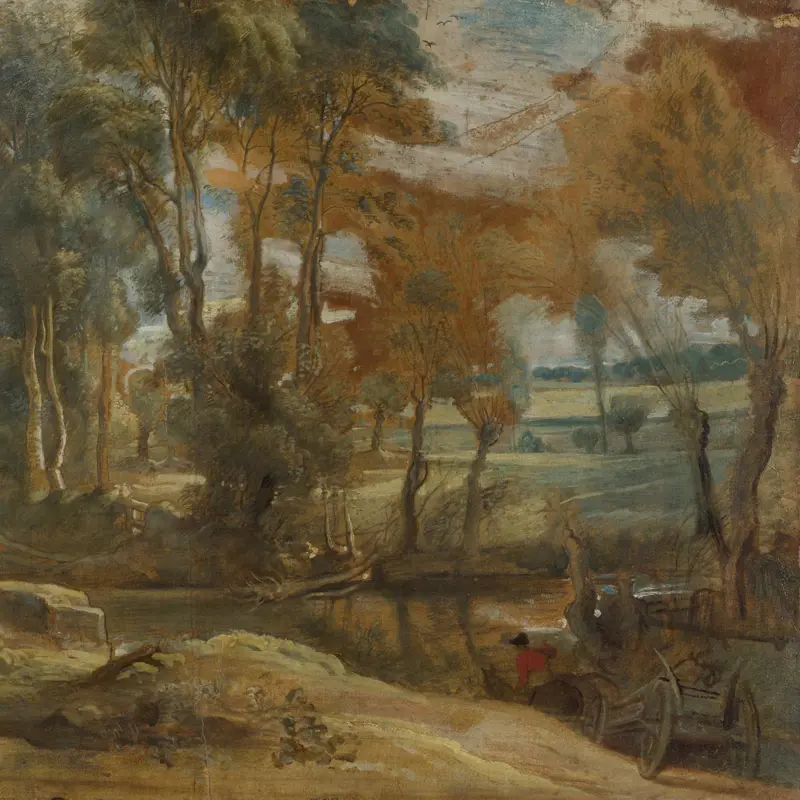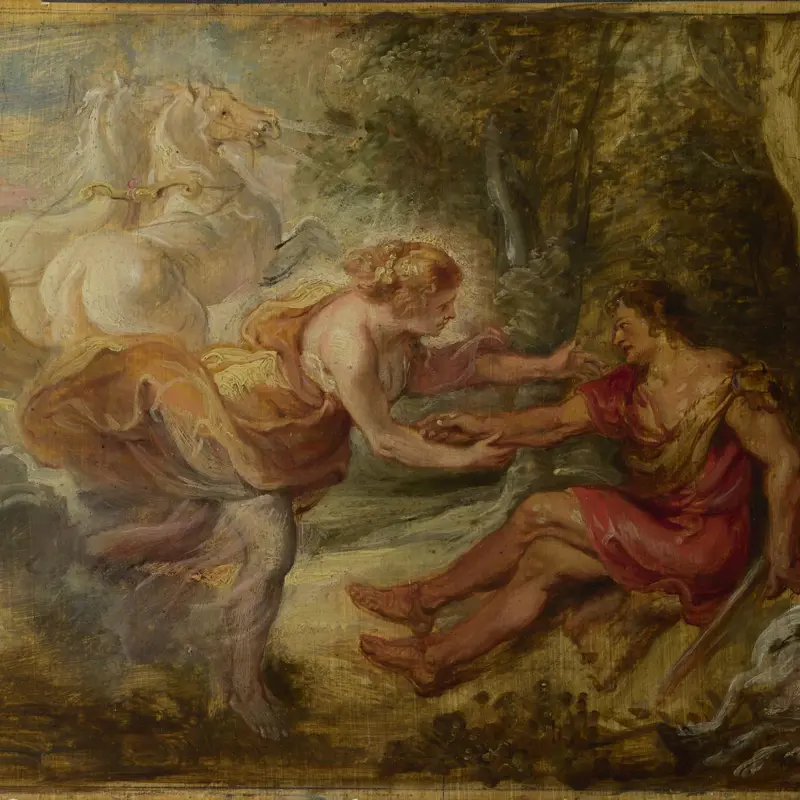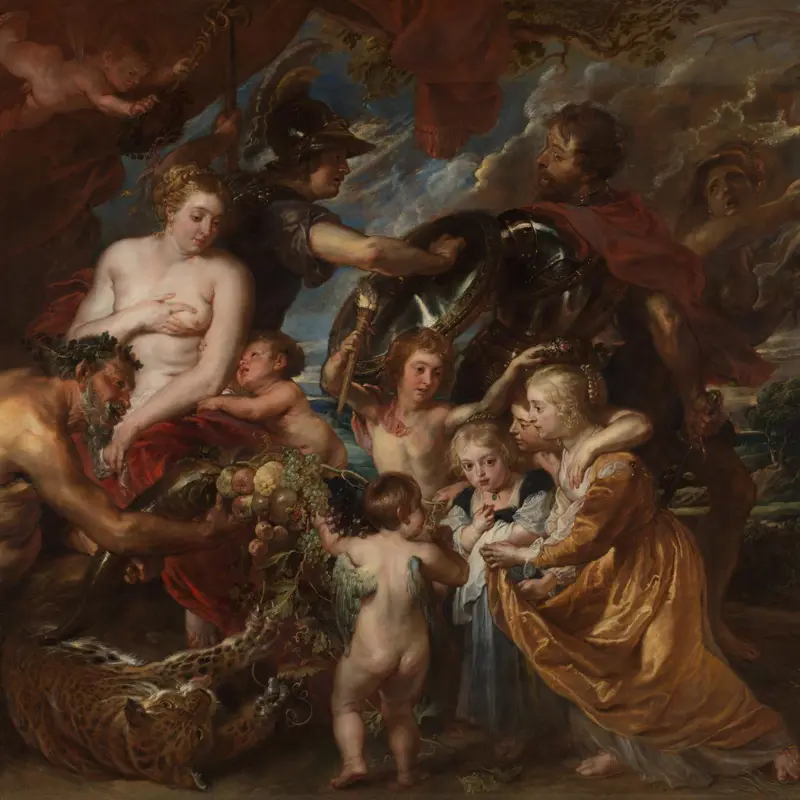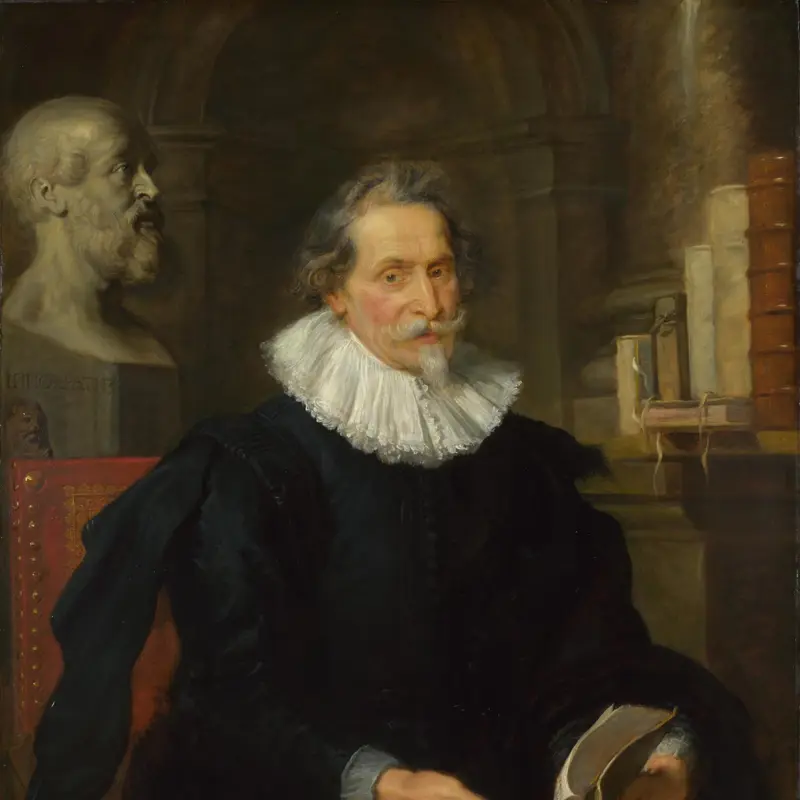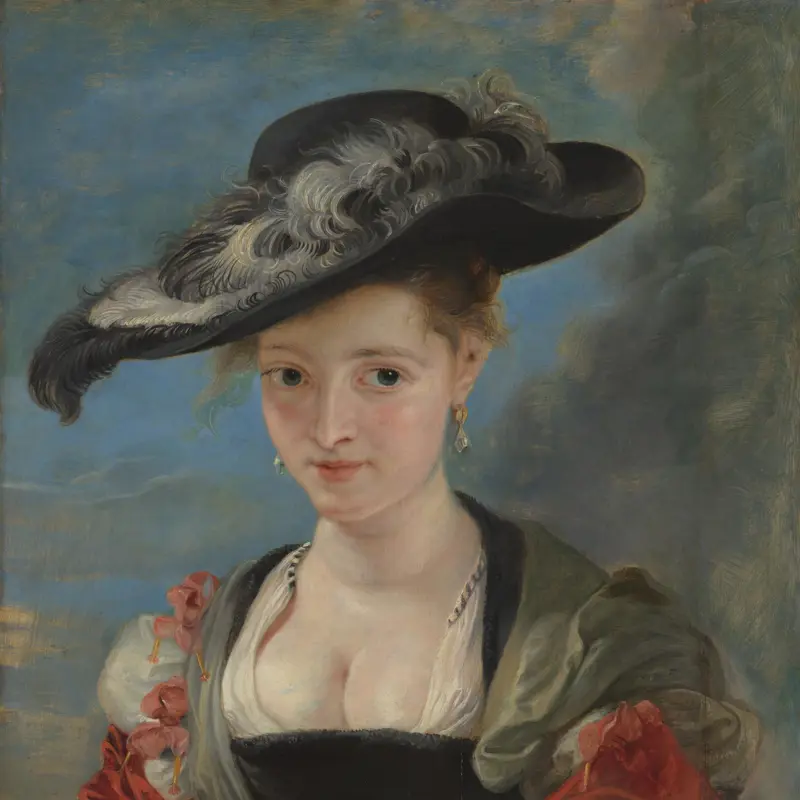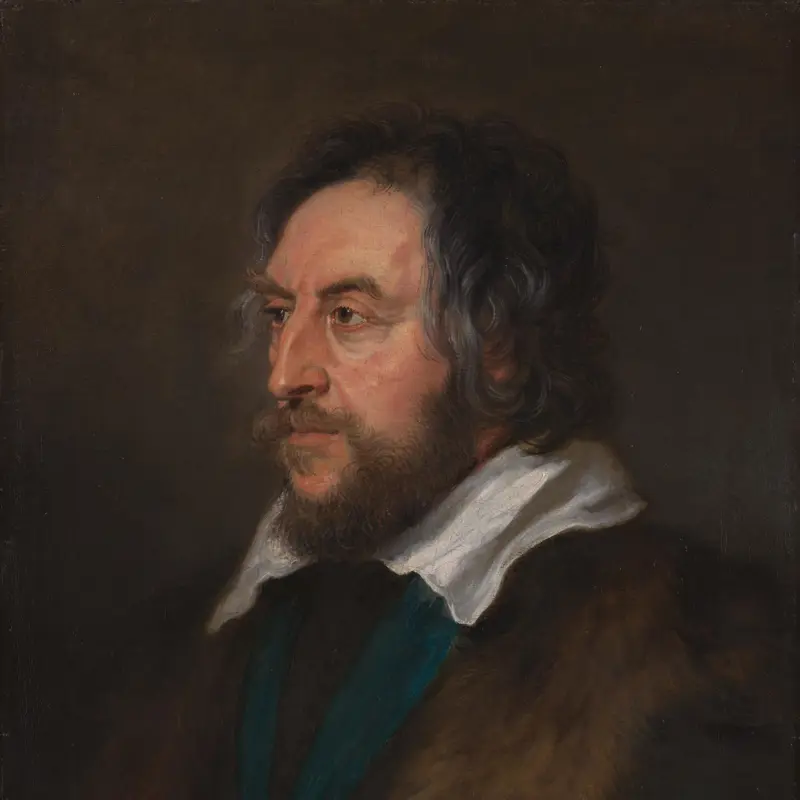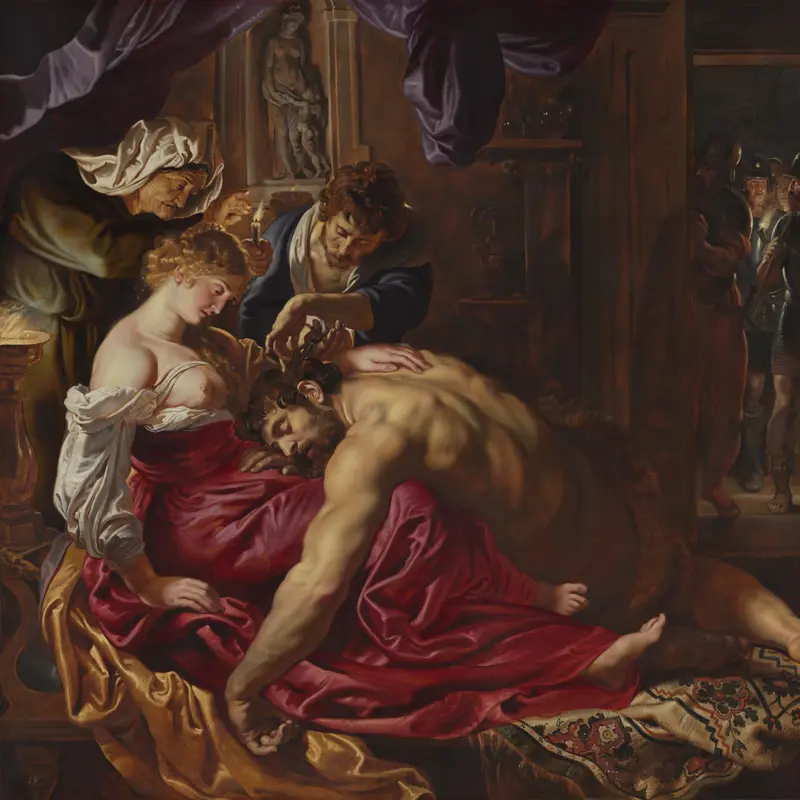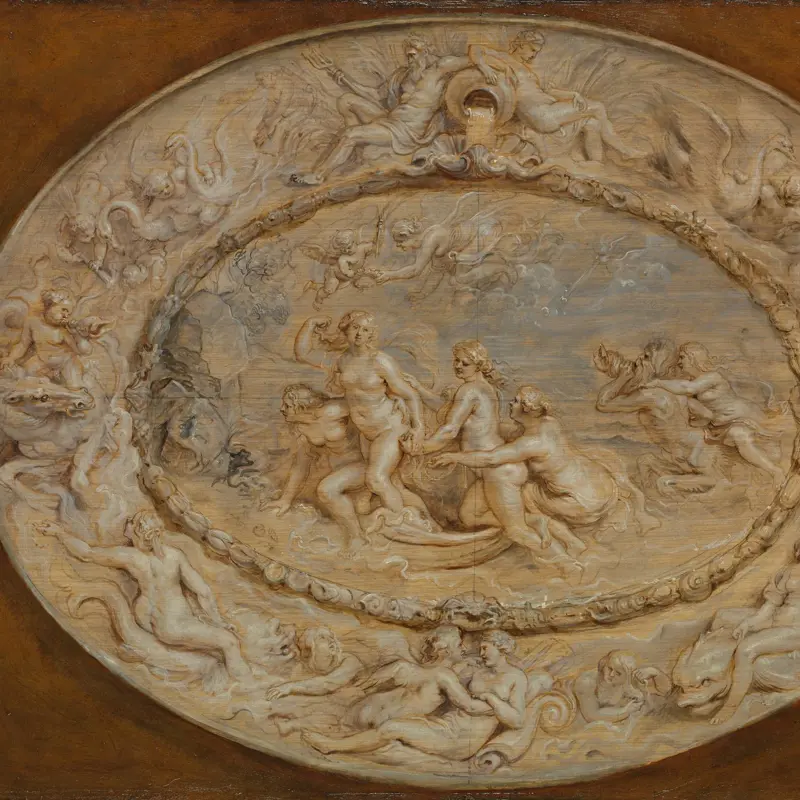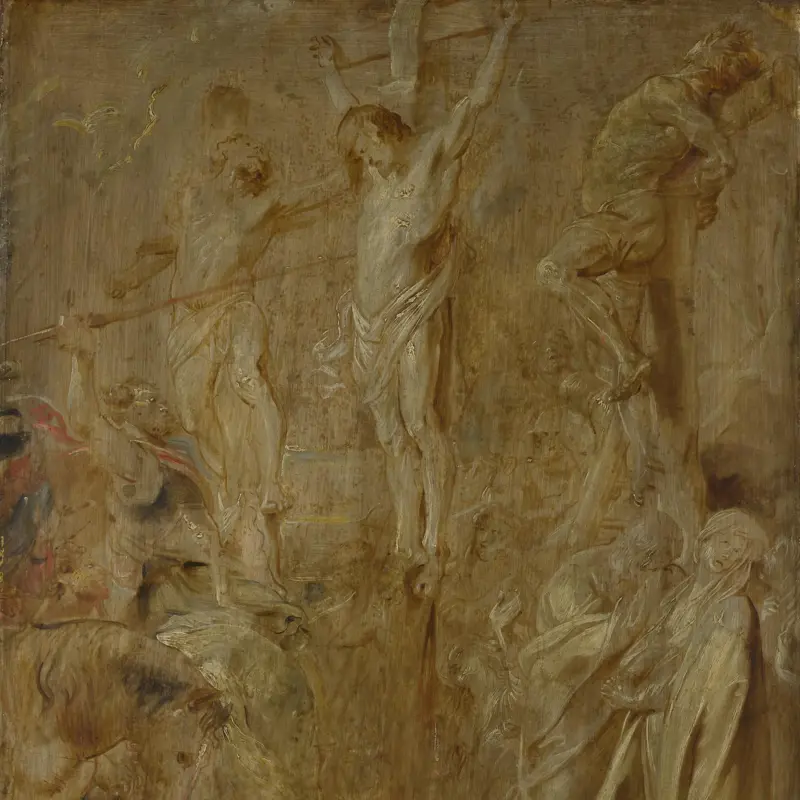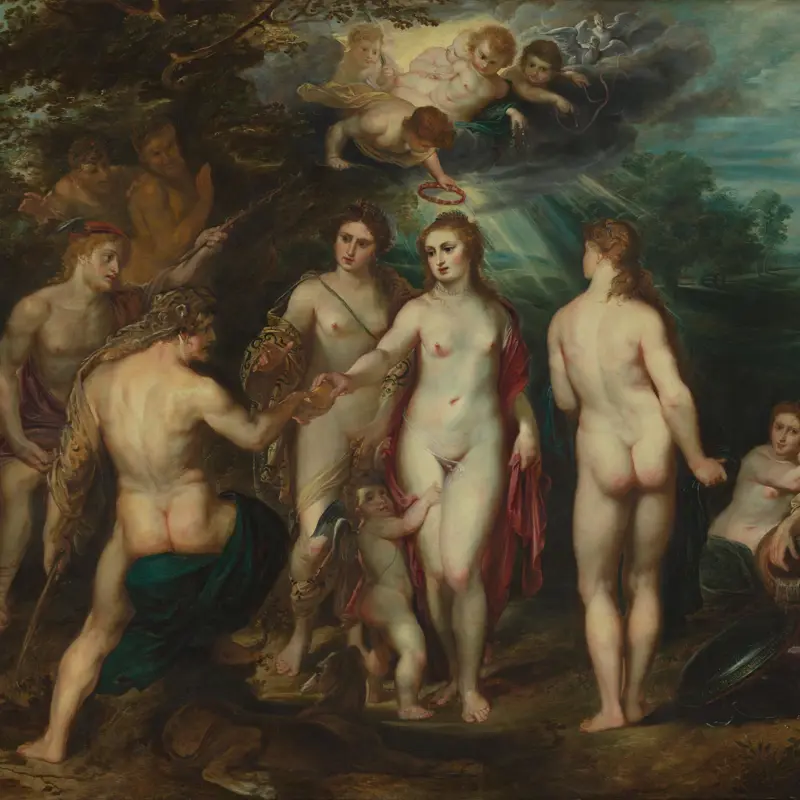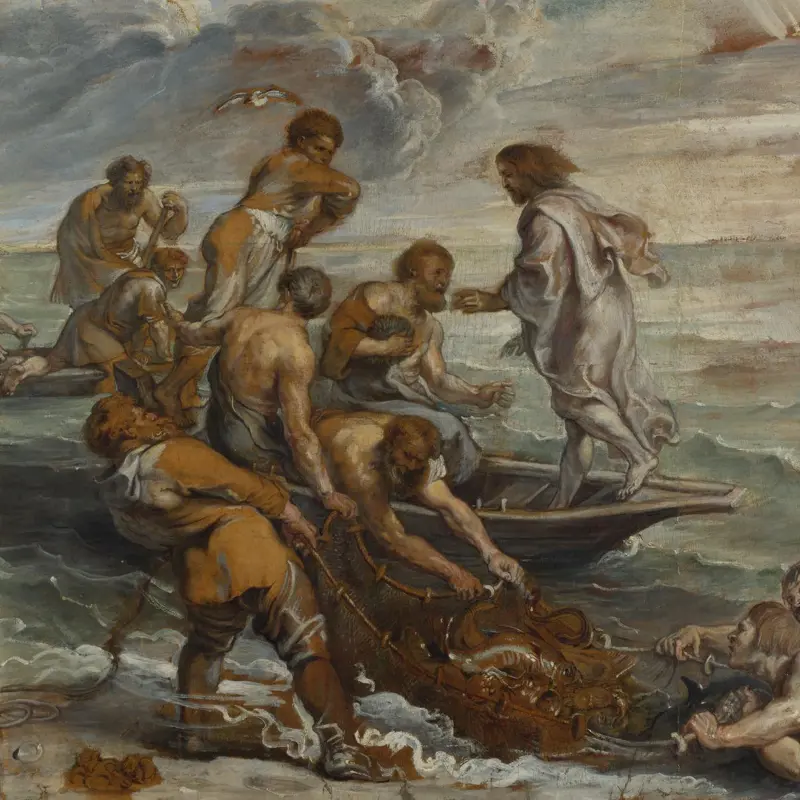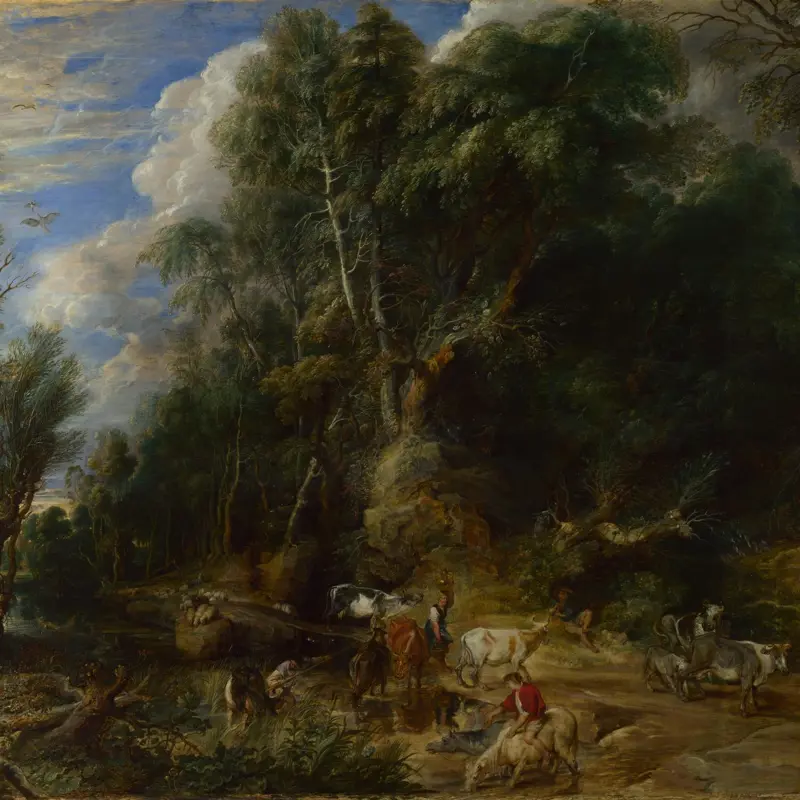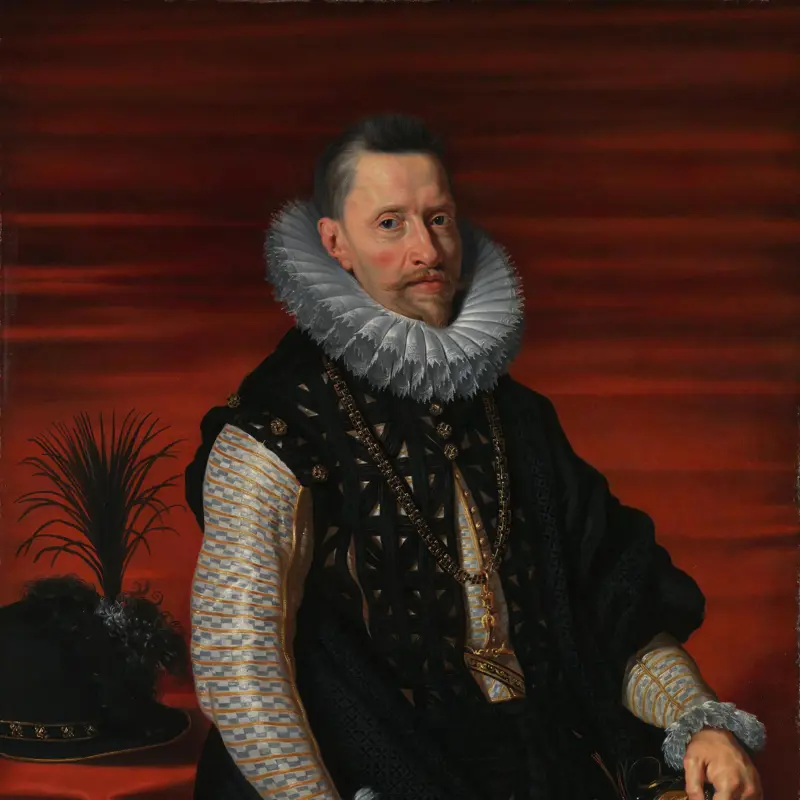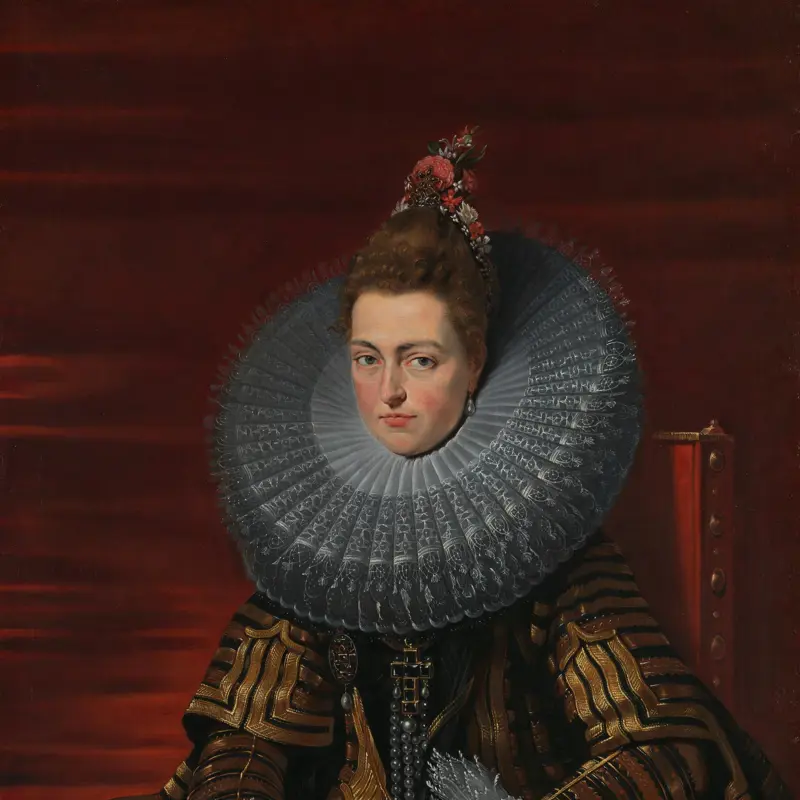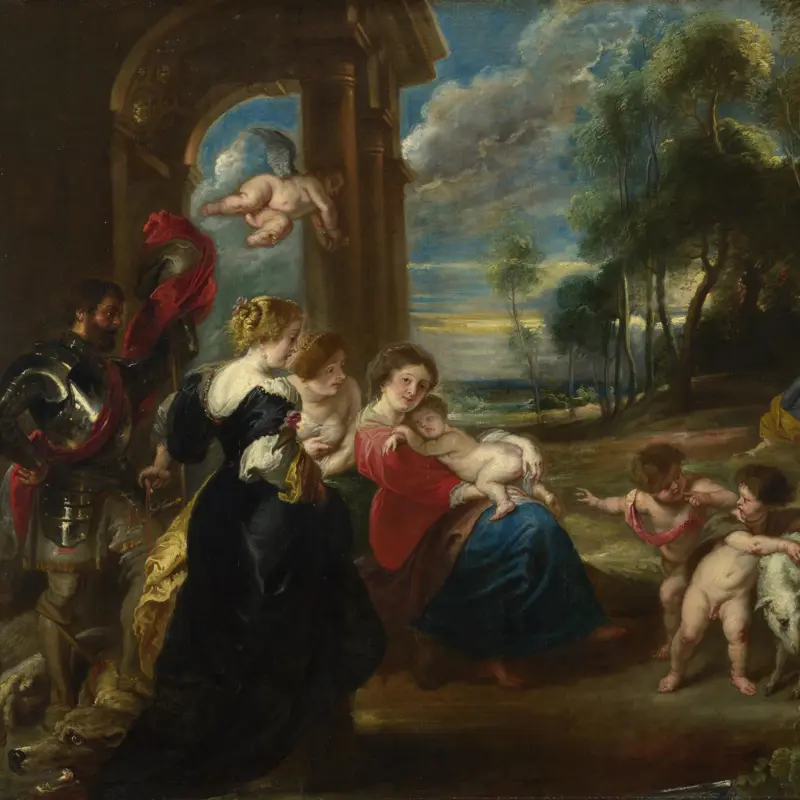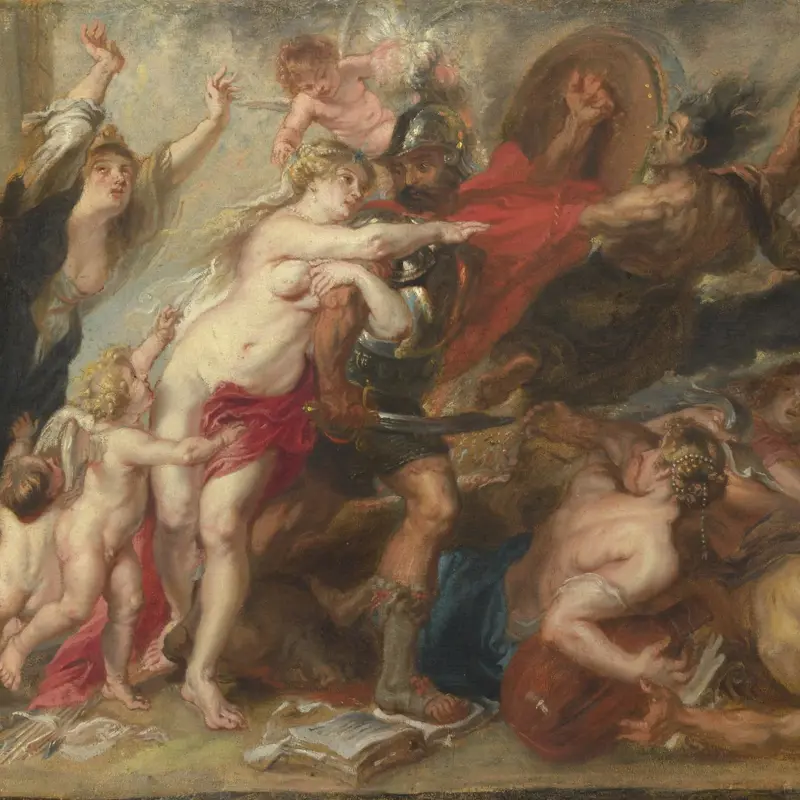Peter Paul Rubens, 'Saint Bavo is received by Saints Amand and Floribert', 1611-12
About the work
Overview
This scene makes up the central panel of an altarpiece Rubens made for St Bavo’s Cathedral, Ghent; this painting is a preliminary sketch for the work. Saints Amand and Floribert receive Saint Bavo, a former Roman soldier, on the steps of St Peter’s Church, also in Ghent.
A cleric holds the black habit of the Benedictine Order for Saint Bavo, a replacement for his armour. He has relinquished his sword to the man behind him, while another hands out his riches to a group of beggars. Two courtiers stand at the bottom of the steps, a dog at their feet, while more people crowd the staircase and the foreground, creating a feeling of frenzy.
Key facts
Details
- Full title
- Saint Bavo is received by Saints Amand and Floribert
- Artist
- Peter Paul Rubens
- Artist dates
- 1577 - 1640
- Part of the group
- Oil Sketch for High Altarpiece, St Bavo, Ghent
- Date made
- 1611-12
- Medium and support
- oil on wood
- Dimensions
- 106.7 × 82.1 cm
- Acquisition credit
- Holwell Carr Bequest, 1831
- Inventory number
- NG57.1
- Location
- Room 18
- Collection
- Main Collection
- Previous owners
- Frame
- 21st-century Replica Frame
Provenance
Additional information
Text extracted from the ‘Provenance’ section of the catalogue entry in Gregory Martin, ‘National Gallery Catalogues: The Flemish School: circa 1600–circa 1900’, London 1986; for further information, see the full catalogue entry.
Bibliography
-
1986Martin, Gregory, National Gallery Catalogues: The Flemish School, circa 1600 - circa 1900, London 1986
-
2001
C. Baker and T. Henry, The National Gallery: Complete Illustrated Catalogue, London 2001
About this record
If you know more about this work or have spotted an error, please contact us. Please note that exhibition histories are listed from 2009 onwards. Bibliographies may not be complete; more comprehensive information is available in the National Gallery Library.
Images
About the group: Oil Sketch for High Altarpiece, St Bavo, Ghent
Overview
These three oil sketches, or modelli, were made by Rubens in preparation for an altarpiece for St Bavo’s Cathedral, Ghent, which was commissioned by Bishop Maes around 1611. The central panel shows Saint Bavo, a Roman solider who left the military to join the Christian Church, standing on the steps of St Peter’s Church, Ghent. Having given away all his money, he is being received by Saints Amand and Floribert as a monk. The left panel shows Saint Bavo’s sisters, Gertrude and Begga, who followed their brother’s example by becoming nuns. On the right panel, King Clothar and his son King Dagobert argue with a herald of the Roman Emperor Mauritius about a rule that forbade soldiers from becoming monks.


